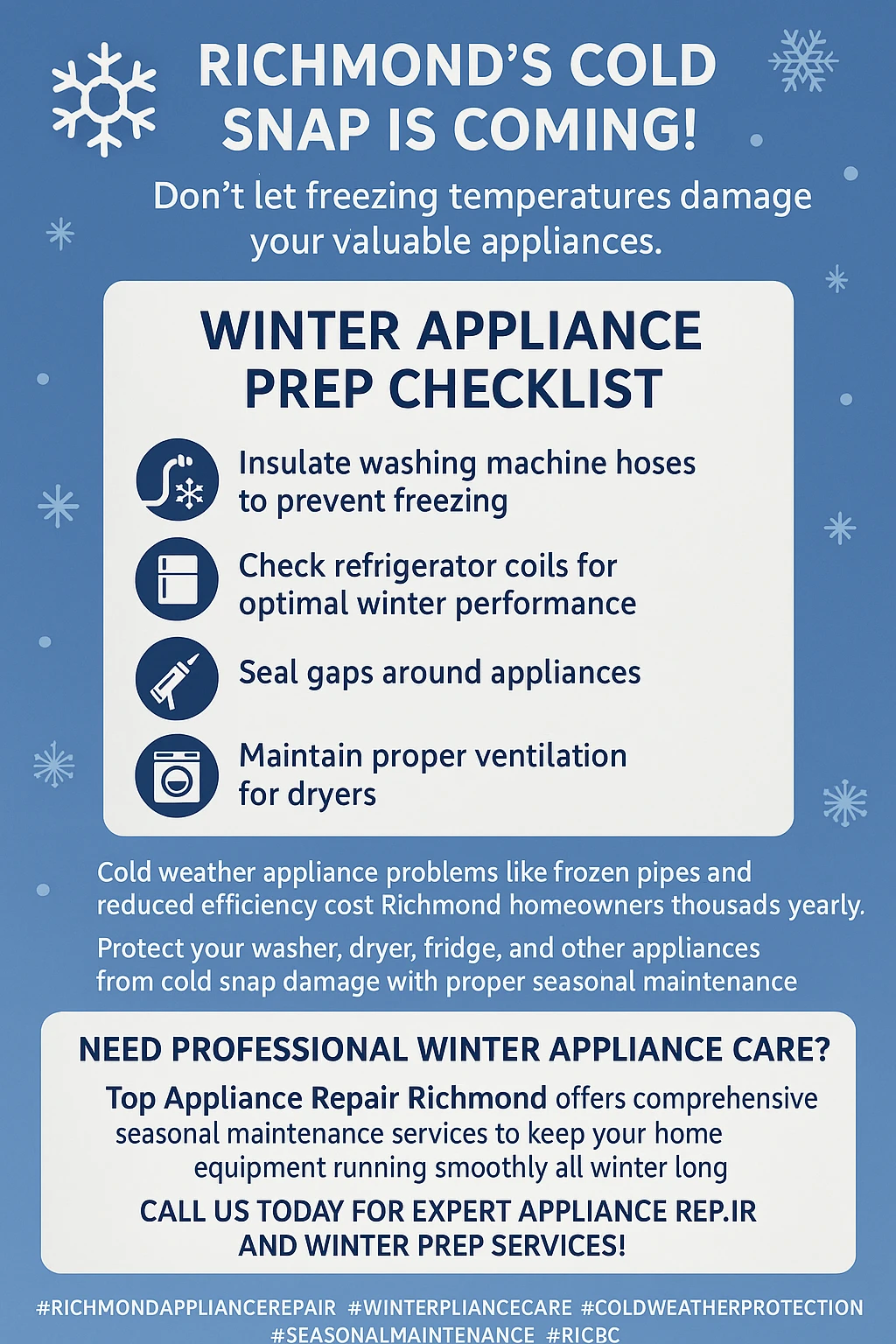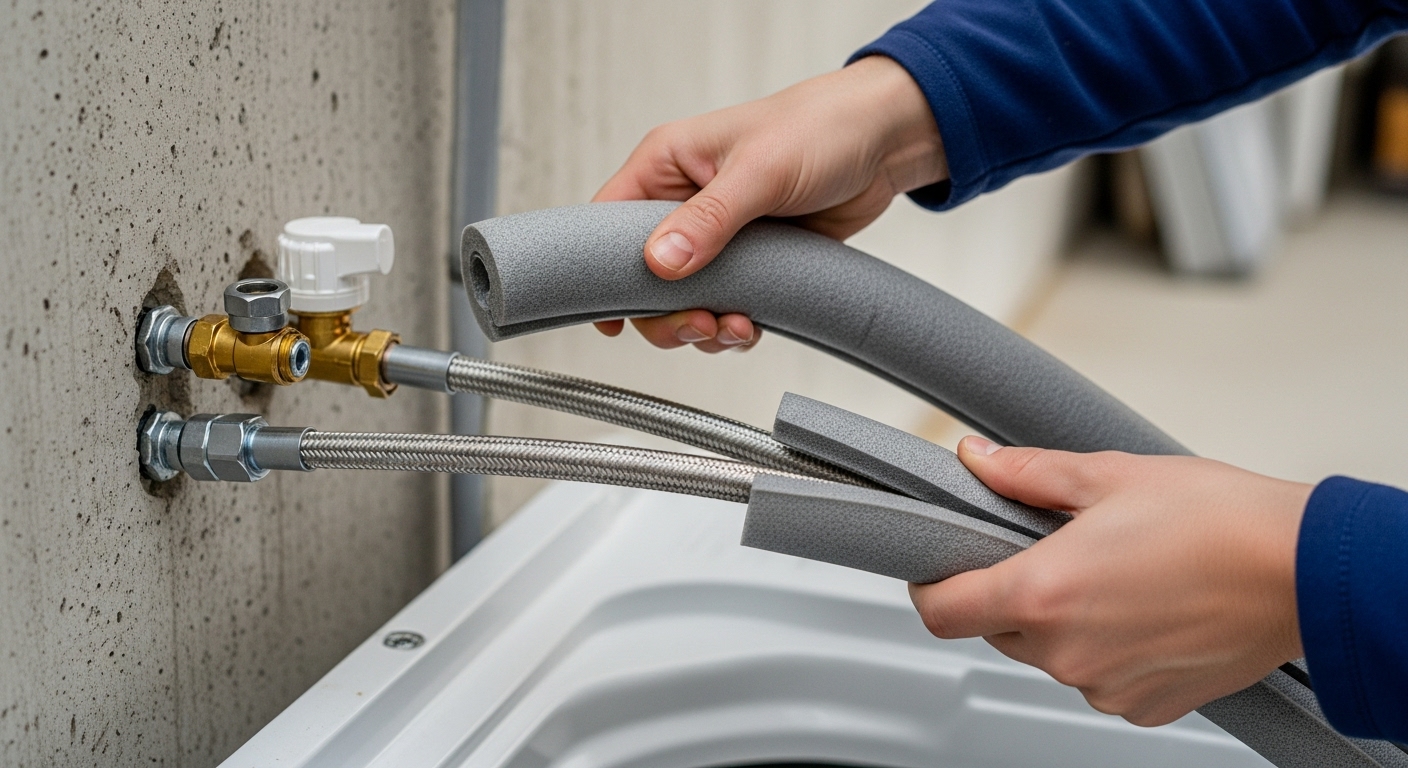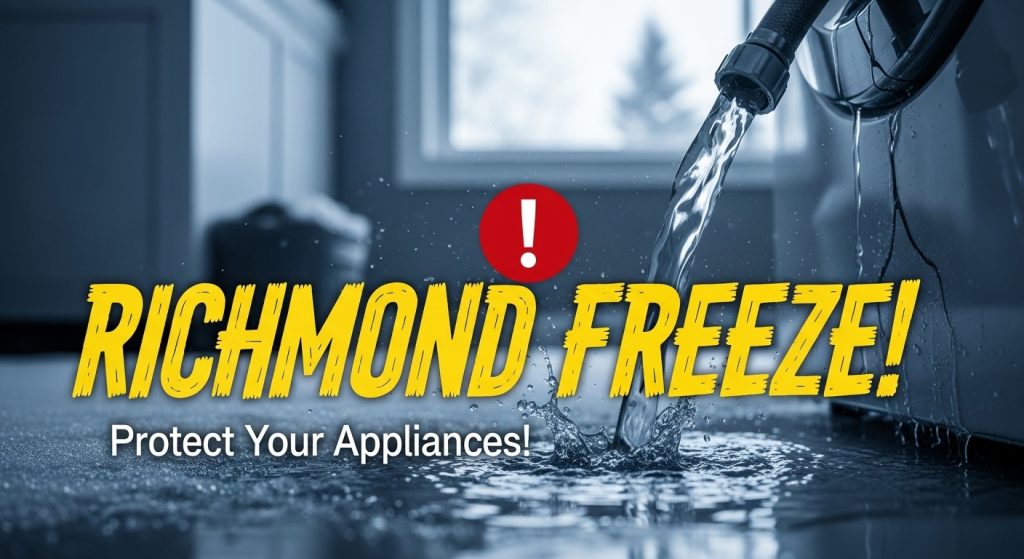Winter Appliance Prep: Protecting Your Home Equipment from Richmond’s Cold Snap Damage
Worried about your appliances taking a beating during Richmond’s unpredictable winter weather? Don’t stress – we’ll walk you through the most effective strategies to protect your home equipment from cold snap damage, plus share some insider tips that’ll keep everything running smoothly all season long.
Richmond’s winters might seem mild compared to other parts of Canada, but don’t let that fool you into thinking your appliances are in the clear. With temperatures dipping to around 1°C and humidity levels that seem to have a mind of their own, your home equipment faces unique challenges that can lead to costly breakdowns and repairs. The combination of moisture-laden air and sudden temperature drops creates the perfect storm for appliance stress, from frozen pipes to overworked heating systems.I learned this lesson the hard way during my first winter in a Richmond rental when my washing machine decided to turn into an ice sculpture overnight. One minute it was humming along just fine, the next morning the drain hose was frozen solid, and I had a laundry room that looked like something out of a disaster movie. That experience taught me that even “mild” winters require serious preparation if you want to avoid emergency repair calls and the headache of dealing with damaged equipment. The good news is that protecting your appliances doesn’t require a PhD in mechanical engineering or a massive budget. With some strategic planning and regular maintenance, you can keep your home running smoothly throughout Richmond’s winter months. From simple DIY checks that take five minutes to smart preventive measures that’ll save you hundreds in repair costs, we’ve got you covered with practical solutions that actually work.
Key Outtakes:
- Check and replace worn door seals on refrigerators and freezers to maintain proper temperature control and prevent energy waste
- Prevent frozen pipes by allowing faucets to drip during cold snaps and insulating exposed plumbing in unheated areas
- Clean appliance components regularly, including condenser coils, dryer vents, and furnace filters to maintain peak efficiency
- Run periodic hot water cycles through washing machines and dishwashers to prevent drain line freezing
- Schedule preventive maintenance with local Richmond repair services before cold weather hits to catch potential issues early

Understanding Richmond’s Winter Appliance Challenges
Living in Richmond means dealing with a climate that’s trickier than it appears on the surface. While we’re not battling the brutal cold of the prairies, our winter weather creates its own set of problems that can wreak havoc on home appliances. The constant dance between mild temperatures and sudden cold snaps puts unique stress on your equipment that many homeowners don’t anticipate until it’s too late.The real culprit here isn’t necessarily the cold itself, but the humidity that comes with our coastal location. When that moisture-heavy air meets fluctuating temperatures, it creates condensation issues that can damage electrical components and cause ice buildup in unexpected places. Your refrigerator might be working overtime to maintain proper temperatures, while your dryer struggles with longer drying times due to the ambient humidity. It’s like asking your appliances to perform a delicate balancing act while someone keeps changing the rules.What makes Richmond’s winter particularly challenging for appliances is the unpredictability factor. One day you’re enjoying a pleasant 8°C afternoon, and the next morning you’re scraping ice off your car windshield. This constant temperature fluctuation forces appliances to work harder as they try to adapt to changing conditions. Your HVAC system cycles more frequently, your water heater adjusts constantly, and appliances with water lines face the risk of freeze-thaw cycles that can cause serious damage.
Refrigerator and Freezer Winter Protection
Your refrigerator is probably the hardest-working appliance in your home, and winter weather can push it to its limits in ways you might not expect. The key to keeping your fridge running efficiently through Richmond’s cold months starts with understanding that temperature consistency is everything, and even mild winter conditions can disrupt that delicate balance.The first line of defense is checking those door seals religiously. Here’s a trick that’ll save you money: grab a dollar bill and close it in the door – if you can pull it out easily, your seal needs replacing. Faulty seals don’t just waste energy; they force your compressor to work overtime, which can lead to premature failure during the months when you need your fridge most. I’ve seen too many people ignore this simple check only to face a dead refrigerator in the middle of a winter storm.Temperature calibration becomes critical during winter months when your kitchen’s ambient temperature fluctuates. Your refrigerator should maintain a steady temperature between 35-38°F (2-3°C), but if your kitchen gets chilly, your fridge might not need to work as hard, while a warm kitchen from holiday cooking can force it into overdrive. Invest in a simple refrigerator thermometer and adjust your settings accordingly – your energy bill will thank you.Don’t forget about those condenser coils hiding behind or underneath your fridge. Richmond’s humid winters create the perfect environment for dust and debris to cake onto these coils, reducing efficiency by up to 25%. Vacuum them monthly using the brush attachment, and you’ll not only improve performance but extend your refrigerator’s lifespan. It’s one of those five-minute tasks that can prevent a $500 repair bill down the road. For freezers, especially those in garages or unheated spaces, winter preparation is even more critical. Manual defrost units need attention before cold weather hits – ice buildup reduces efficiency and can damage internal components when temperatures fluctuate. Clean out ice crystals, wipe down interior walls, and check that drain holes are clear to prevent water backup that could freeze and crack your freezer’s interior.
Washing Machine and Dryer Cold Weather Care
Moving from the kitchen to the laundry room, your washing machine and dryer face their own set of winter challenges that most homeowners completely overlook until disaster strikes. The combination of increased usage during winter months and the risk of frozen drain lines creates a perfect storm for costly breakdowns that could easily be prevented with some basic preparation.Washing machines are particularly vulnerable to drain line freezing, especially if your machine is located in a garage, basement, or other unheated area. The solution is simpler than you might think: run a hot water cycle weekly, even if you don’t have clothes to wash. This keeps water moving through the lines and prevents ice formation that can crack pipes or damage your machine’s pump system. If you’re going away for an extended period, drain the hoses completely or add RV antifreeze to the system – just make sure to run a cleaning cycle when you return.For those dealing with machines in particularly cold locations, insulating exposed plumbing is non-negotiable. Foam pipe insulation costs less than $20 and can save you hundreds in repair costs. Pay special attention to the drain hose and water supply lines, as these are the most likely to freeze and cause significant damage. If you’re in a rental property, have a conversation with your landlord about winterizing these areas before problems develop. Your dryer faces different challenges during winter months, primarily related to increased lint buildup from heavier clothing and more frequent use. That lint trap cleaning you might skip during summer becomes critical in winter – not just for efficiency, but for fire safety. Clogged vents force your dryer to work harder and longer, creating heat buildup that can ignite accumulated lint. Clean the trap after every load and schedule a professional vent cleaning if you notice longer drying times or excessive heat.The external dryer vent is another trouble spot many homeowners ignore. Snow, ice, or debris can block the vent opening, causing moisture and lint to back up into your home. Check the external vent monthly during winter and clear any obstructions. If you notice condensation in your laundry room or a musty smell, your vent might be partially blocked, creating both efficiency and safety issues.Don’t overlook the importance of proper ventilation in your laundry area during winter months. Closed windows and doors can trap moisture from your dryer, leading to humidity problems that affect other appliances and can cause mold issues. If possible, crack a window slightly during drying cycles, or ensure your exhaust fan is working properly to maintain air circulation.

Preventing Frozen Pipes and Water Damage
Nothing ruins a winter morning quite like discovering frozen pipes, and in Richmond’s climate, this scenario is more common than you might expect. While our winters aren’t as harsh as other parts of Canada, the combination of overnight temperature drops and poorly insulated plumbing creates the perfect conditions for pipe freezing that can lead to thousands of dollars in water damage.The most vulnerable areas in your home are typically unheated spaces like basements, crawl spaces, garages, and exterior walls where pipes run close to the building envelope. These areas can experience temperatures well below the main living space, putting water lines connected to your washing machine, dishwasher, or ice maker at serious risk. Even a short cold snap can be enough to freeze the water inside, causing the pipe to expand and potentially burst.To combat this, start with a thorough inspection of your home’s plumbing before winter sets in. Identify any exposed pipes in unheated areas and insulate them with foam sleeves or heating tape – it’s a small investment that offers huge protection. For pipes running along exterior walls, open cabinet doors under sinks during cold snaps to allow warmer air from your home to circulate around them. This simple trick is surprisingly effective at preventing freezing.Another tried-and-true method during particularly cold nights is to let faucets connected to vulnerable pipes drip slowly. Keeping the water moving, even a little, is often enough to prevent it from freezing solid. It might seem wasteful, but a dripping faucet is far cheaper to deal with than a burst pipe and the resulting water damage. If you’re leaving town during the winter, never turn your heat off completely. Set your thermostat to at least 13°C to ensure the ambient temperature in your home is high enough to protect your plumbing.
Dishwasher and Furnace Winter-Proofing
Your dishwasher and furnace are two other key players that need attention as winter approaches. While they might seem unrelated, both are susceptible to cold-weather issues that can impact their performance and longevity. A little preventive care goes a long way in ensuring they operate safely and efficiently throughout the season.For your dishwasher, the primary concern is the drain line, which can be vulnerable to freezing if it runs through a cold crawl space or along an exterior wall. Similar to your washing machine, running a hot cycle periodically can help keep the line clear. If your dishwasher isn’t used frequently during winter, this becomes even more important. After a cycle, a small amount of water remains in the sump and drain hose, which can freeze and damage the pump or cause a leak. To be extra safe, you can add a cup of RV antifreeze to the bottom of the dishwasher between uses, but be sure to run a full rinse cycle before washing dishes again.Your furnace, on the other hand, is about to enter its busiest season. The single most important thing you can do for your furnace is to clean or replace the filter regularly. A clogged filter restricts airflow, forcing the system to work harder, which increases energy consumption and can lead to overheating and premature failure. Check your filter monthly during peak heating season and replace it as needed – it’s a five-minute job that has a massive impact on your system’s health.Also, take a moment to inspect the area around your furnace. Ensure that the vents and air intakes are not blocked by storage boxes, furniture, or other items. Proper airflow is crucial for both efficiency and safety. If you have a high-efficiency condensing furnace, check that the exterior intake and exhaust vents are clear of snow, ice, and debris. A blocked vent can cause the system to shut down or, in a worst-case scenario, lead to carbon monoxide buildup in your home.
